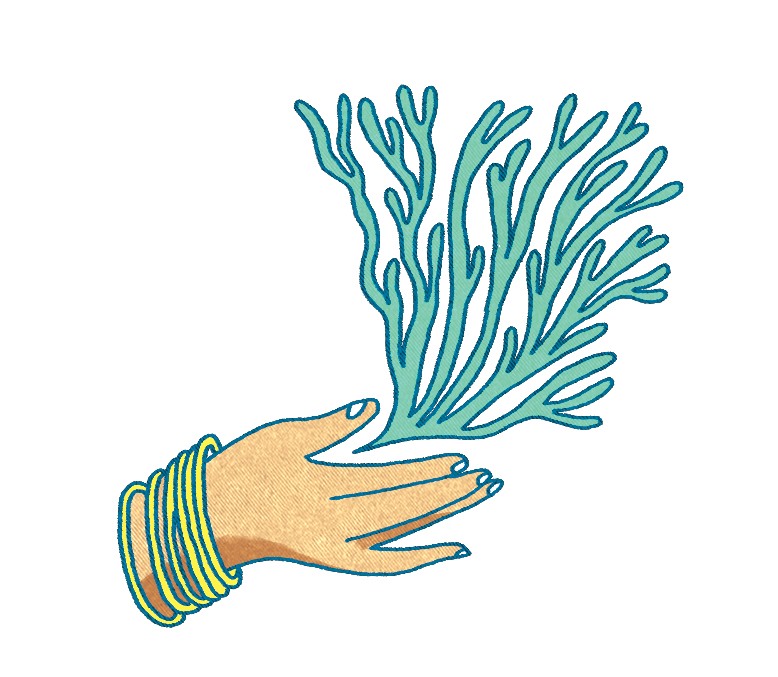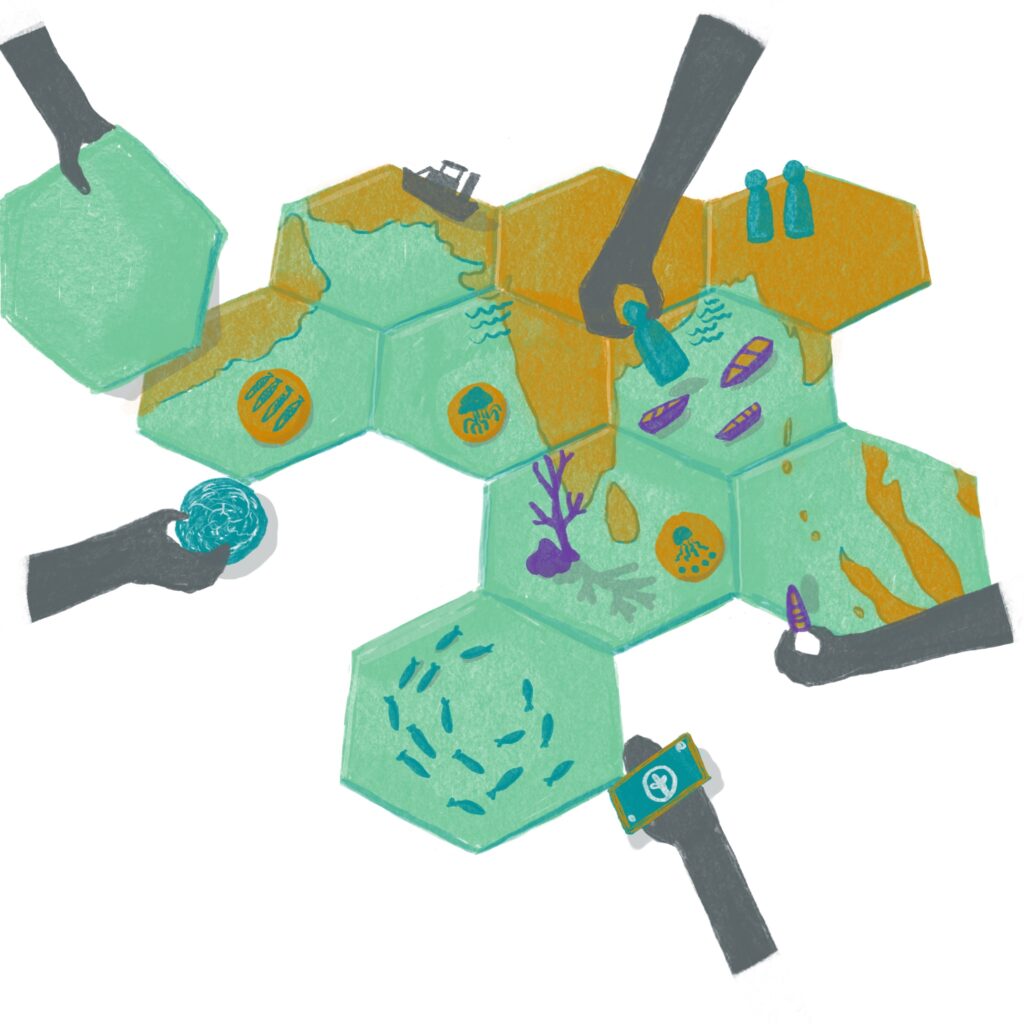As food security moves to the forefront of national priorities in developing nations, governments are investing more in knowledge generation with the expectation that science and technology will help rescue imperiled stocks and boost agricultural yields.
Marine fisheries are particularly troubled as wild fish landings have continued to decline since the 1980s. Although a few marine fisheries are managed sustainability (notably sockeye salmon in Alaska), the majority of the world’s fish stocks are currently fully exploited, over-exploited or depleted. Further, although the broad development of aquaculture has led to a net increase in global fish production, aquaculture has done little to alleviate fishing pressure on wild stocks, and may exacerbate their vulnerability to collapse. National and regional initiatives, such as the visionary Coral Triangle Initiative, highlight the need for science based knowledge to aid in the development of more sustainable fishery regulations and practices, and conserve centres of marine biodiversity. Yet, how exploitative fishing and conservation can successfully cooperate remains uncertain. At face value, conservation and exploitation may seem like two sides of the same coin; one aiming to safeguard marine resources, the other tasked with harvesting them. However, both are necessary. Marine resources must be exploited to feed our global population and provide livelihood for millions of people; and marine resources must be conserved to ensure that future generations can also provide for themselves and that marine food webs endure.
This challenge has yet to be solved, but we are striding forward. Here, I describe how an investment in scientific research for the exploitation of a fishery produced valuable and unexpected data for the conservation of that fishery. Mandated by the Philippine administration to be the research arm of the Bureau of Fisheries and Aquatic Resources, the National Fisheries Research and Development Institute (NFRDI) has been the principle source of government-supported scientific data for the development and management of the country’s fisheries since 2001. Since its origin, the Institute has primarily utilised labor-intensive field measurements to obtain stock assessment metrics of growth, abundance and mortality rates of highly-valued commodity species. Although well-established and important in providing a snapshot of fish population parameters (such as Total Available Catch), these metrics are limited to quantifying phenotypic patterns (physical attributes or phenotypes). They provide little insight for delineating stock boundaries, quantifying migration rates and identifying corridors and barriers to gene flow. Rather, to effectively describe these metrics, researchers required tools that profiled the genotypic features (genetic attributes or genotypes) of the fish populations; they use population genetics.

A population is a group of organisms living in the same geographic area that can potentially interbreed. Population genetics, furthermore, is the study of the genetic variation in a population and how it changes in response to environmental and evolutionary forces. Whereas phenotypes can be quantified by examining the physical features of an organism, genotypes are obtained from an organism’s genetic features. One way to obtain this data is through DNA sequencing. Genotypic data has several advantages over phenotypic data; in particular that genetic data shows patterns and traits that may not be expressed in the phenotype, in other words, features that are not visible. For this reason, genotypic data is a powerful tool in species identification, especially in specimens that are difficult to distinguish by appearance. Further, this data can used to determine from which population an individual originated, the parentage and kinship of individuals in a population, and the relatedness among populations distributed over a geographic region. These uses are applicable to marine fisheries management, particularly for demarcating the geographic limits or boundaries of a fish population (delineating stock boundaries), and for locating pathways or corridors where genes are transferred among populations via migration (gene flow).
The emergence of a wide range and inexpensive suite of molecular genetics tools over the past two decades has since made genotypic studies commonplace, even on the modest budget of research laboratories in developing nations. The formation of NFRDI’s molecular genetics laboratory signified a stride forward for fisheries research in the Philippines. In recent years, NFRDI has become the leading government laboratory utilising molecular genetics explicitly for fisheries research, and overall, one of the nation’s most productive sources for scholarly, peer-reviewed molecular genetics publications.
Tuna, mackerel, scad and sardines are the primary targets of capture-fisheries of the Philippines and across much of South East Asia. Of these, sardines are the cheapest and most accessible source of animal protein in the Philippines and provide billions of pesos in domestic economic revenue. Molecular genetic research on this taxon was limited to just a handful of studies on a rare and endemic freshwater species prior to 2010. At that point, a new collaboration focusing on sardine research was forged between NFRDI and the Old Dominion University (United States). By design, NFRDI would host an Old Dominion University scientist for two years who would mentor the Institute’s junior scientists and together generate molecular data on sardines.The research aim was to delineate sardine stock boundaries, following which the data would be transferred to a policy-making body actively in the process of forming national sardine policy. In short, this objective was met and culminated in several data-supported recommendations made to policy makers. Subsequently, one recommendation was incorporated into an administrative order instituting a closed season for sardine fishing in southern Philippine waters. This involved a correction to the taxonomic nomenclature of the most abundant sardine species (Sardinella lemuru) that had persisted for nearly a century, an important amendment given regulations are species-specific. Although the incorporated recommendation was modest in scope, it signified a discrete example of molecular genetics data being applied to the development of marine fishery policy in a developing nation.

More exciting from a conservation perspective were, however, the unanticipated discoveries that shed new light on the biodiversity of this valued fishery. In addition to the previously mentioned taxonomic correction of the most common Philippine sardine, we identified the presence of a sardine previously unknown to the archipelago. Sardinella hualiensis, the Taiwanese sardinella, as its name indicates, is native to Taiwan and mainland China. This is a particularly fascinating discovery when considering the sea-surface temperature regimes of these areas; Philippine waters are tropical, Taiwanese waters are temperate to sub-tropical. In other words, the water where the sardine is “from” is cooler; yet repeated field and molecular assessments confirm its presence in the Philippines. Could the range extension of a northern-latitude, cool water species be in some way related to global climate change, or has the Taiwanese sardinella long been present in the Philippines and just has gone unnoticed? Given the difficulty in taxonomic identification of sardines, the latter is plausible. Since 1908, the number of Philippine sardinella species cited in scientific publications has ranged from three to eleven. Using a combination of robust morphological and genetic metrics on specimens from across the Philippines, we at the NFRDI lab have confirmed the presence of six Sardinella, including the Taiwanese sardinella.
Further, we have been able to quantify the genetic diversity of these sardines in relation to their geographic distribution across the archipelago—their phylogeographic pattern. Paralleling the region’s extraordinary level of marine biodiversity (the Philippines is at the apex of the Coral Triangle, the world’s epicenter of marine biodiversity), several of the sardine species show high degrees of genetic diversity, including exceedingly high diversity in one species that it is arguable a cryptic species complex. Cryptic species are morphologically identical (or at least highly similar) but genetically distinguishable sister species evolving from a common ancestor. Cryptic species are common in marine environments with a number of examples in corals, fish, and invertebrates. Their accurate distinction is often only revealed through molecular genetic studies and intuitively, can aid in improved delineation of interbreeding stocks.

Lastly, in a survey of sardine species sold in metropolitan Manila fish markets, we documented the frequent availability of the freshwater sardinella Sardinella tawilis. Endemic to a single freshwater lake in the Philippines and revered as a culinary delicacy, this sardine’s population is currently declining under increased pressure from fishing, invasive species and aquaculture development of the lake. Upon gathering molecular data, we were surprised to discover that none of the marketsold fish were actually the freshwater sardinella as advertised, but rather one of several marine sardinella species. Markets were advertising and selling marine sardines as the freshwater species (the latter fetches a higher price), and consumers were unaware of the switch until our discovery through the use of molecular methods. Note that distinguishing sardinella species is difficult by even a trained scientist and it is unclear where in the supply chain marine fish were being substituted for the freshwater species. This, however, presents an interesting conservation situation— because marine sardines were being sold as the freshwater sardines, the market demand for the actual freshwater sardine is lower and may relieve fishing pressure on an already declining stock. However, molecular evidence shows consumers are being misled.
In science, we are often intensely focused on the discrete objectives of a project, understandably so since they are what research funds have been allocated to. However, if we are rigorous in our investigation and allow the data to lead the discussion, the project not only yields the target information, but could also uncover unanticipated, yet welcome results. Results that are of particular value as we work to find an enduring balance between the exploitation and conservation of our marine resources.






